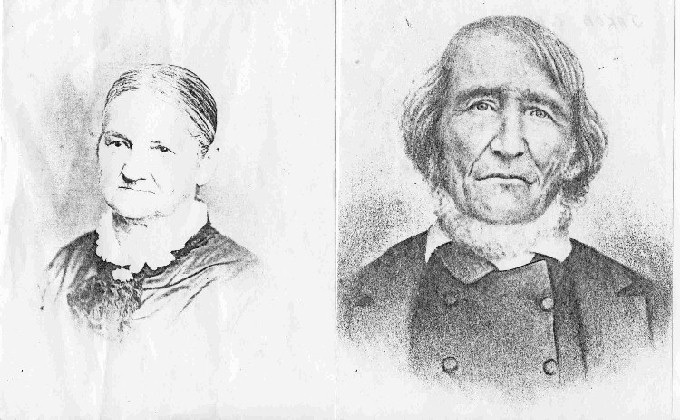German Immigrant Ancestors
in Syracuse and Onondaga County, New York
German travel documents/passports
Reisepässe
The German Pioneer Association was a society established by German immigrants in Onondaga County on 18 June 1892. Approximately one month later the group sponsored a parade and festival unlike anything Syracuse had ever seen.
One of the “German pioneers” participating in the festivities was Peter Gehres, who had arrived in Syracuse in 1855. Recently (2010) I was contacted by a descendant of Peter Gehres, Mark Gellman (Goettel), who was seeking a translation of Peter’s old German passport to America (his Reispass), which had been handed down through the family but could no longer be read or understood, due to the antiquated handwriting. With his kind permission we are able to share these documents with you here, as examples of the kinds of paperwork our immigrant ancestors might have carried. And thanks to the generosity and expertise of Friedrich Huettenberger, we can also offer his translation of these papers as an educational example. These four pages actually turned out to be two passports (plural: Reisepässe), one for Peter Gehres, and one for Anna Elisabetha Falk.
:
1. (front):
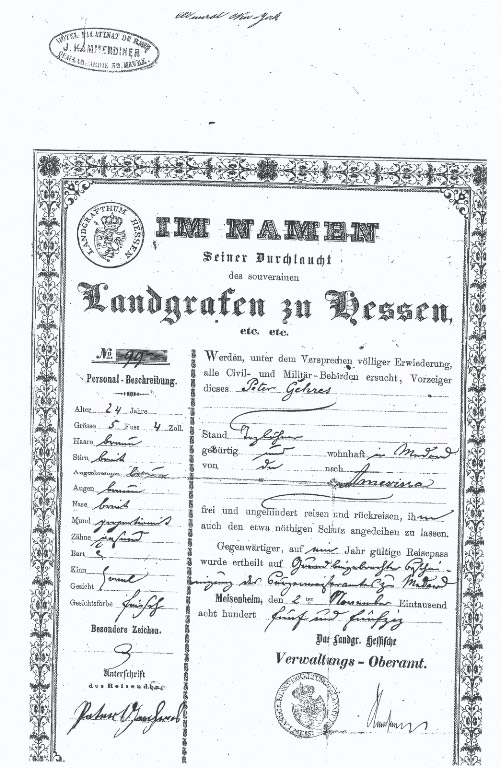
1. Front:
In the name of his Highness the sovereign (land)-Count of Hessia etc. etc.
We ask all civil and military authorities to enable the bearer of this (passport),
Peter Gehres,
profession: day-labourer, (Tagloehner)
born and domiciled in Medard,
free and unimpeded travel from there to America and back, and to grant him protection if need be.
The present passport is valid for one year and was made out on the basis of documents of the district authorities of Medard.
Meisenheim, 2nd of November 1855
Superior administration office of the Count of Hessia.
(Left side:)
Number 99
Description of the person:
Age 24
Size 5 ft 4 inches
Hair: brown
Forehead: large
Eyebrows: brown
Eyes: brown
Nose: proportionate
Teeth: healthy
Beard: ---
Chin:
Face: oval
Color of face: fresh
Special marks: none
Signature of the bearer:
Peter Geehres
2. (back):
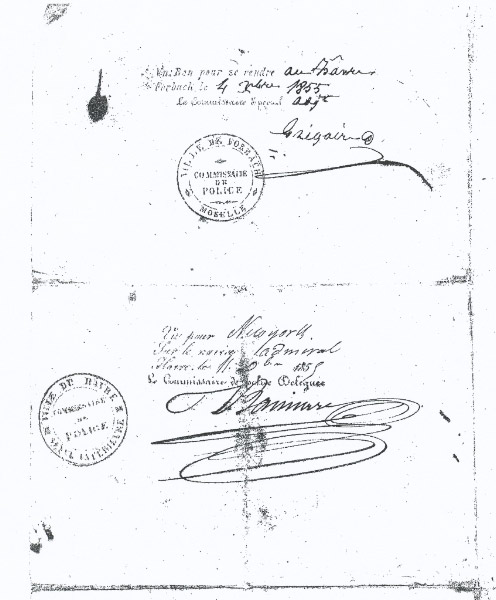
2. Back:
(Stamps and visas made during the travel through France, the first on entering France in the east at Forbach near Saarbrucken, the second on leaving France at the seaport of Le Havre.)
1. Vu bon pour se rendre au Havre (French: good for traveling to Le Havre)
Forbach le 4 Décembre 1855
Le commissaire Spécial Adjoint Grigoire
2. Vu pour New York (French: seen for New York on ship “Admiral”)
Par le navire Admiral
Havre le 11 Décembre 1855
Le commissaire de police délégué (Bannard ?)
3. (front):
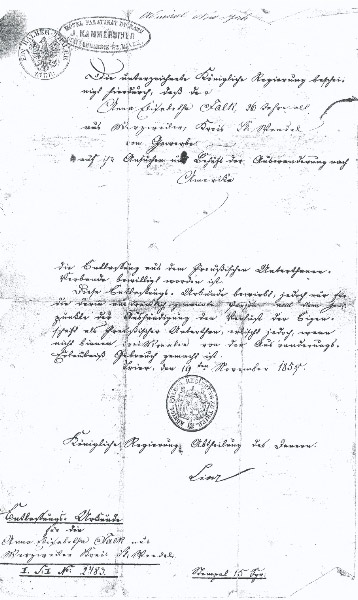
3. Front:
The subsigned Royal Government certifies hereby that
Anna Elisabetha Falk, 26 years old,
From Merzweiler, district of Sankt Wendel
Without any profession
Has asked to emigrate to America
And has been granted leave from the community of Prussian subjects.
This document of leave is valid only for the person especially mentioned in it and only for the point of time mentioned in it and states the loss of the quality of a Prussian subject, but it becomes invalid if within three months no use has been made of the permission to emigrate.
Trier the 19th of November 1855
Royal Government, home department
Linz
Document of leave
for
Anna Elisabetha Falk from
Merzweiler district of Sankt Wendel
Number 2483 stamp 15 Sgr. (= stamp on top of page: ein halber Thaler: a half dollar)
4. (back):
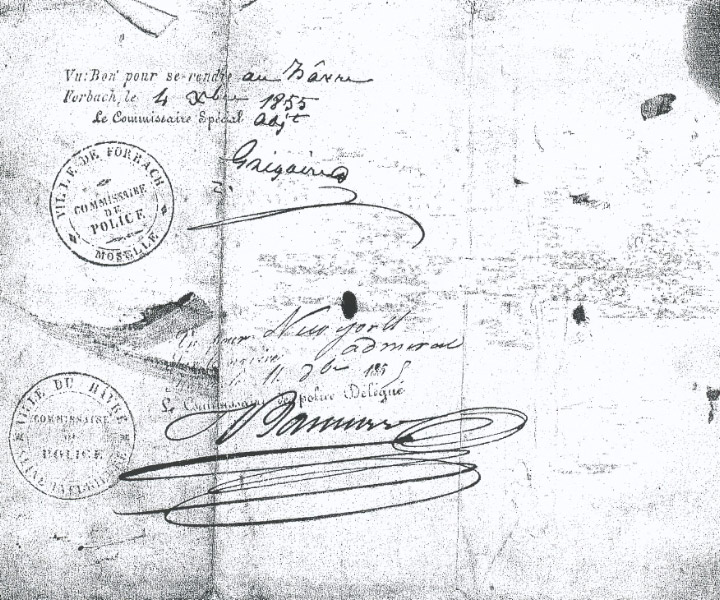
4. Back:
(Stamps and visas made during the travel through France, the first on entering France in the east at Forbach near Saarbrucken, the second on leaving France at the seaport of Le Havre.
1. Vu bon pour se rendre au Havre, (French: good for traveling to Le Havre)
Forbach le 4 Décembre 1855
Le commissaire Spécial Adjoint Grigoire
2. Vu pour New York (French: seen for New York on ship “Admiral”)
Par le navire Admiral
Havre le 11 Décembre 1855
Le commissaire de police délégué (Bannard ?)
The home towns mentioned, Medard and Merzweiler, are neighboring villages, about 7.6 km from each other, on either sides of the larger town of Lauterecken in Kreis Kusel in today’s Rheinland-Palatinate district of southwestern Germany (in beautiful country about 40 minutes north of Kaiserslautern). At the time Peter and Anna emigrated, Medard belonged to Hessen-Homburg, and Merzweiler belonged to Prussia. These two people traveled on the same ship, the “Admiral,” and seemed to take the same traveling route at the same time. Later they would become husband and wife. They lived for the rest of their lives in Syracuse and are buried there in Woodlawn Cemetery:
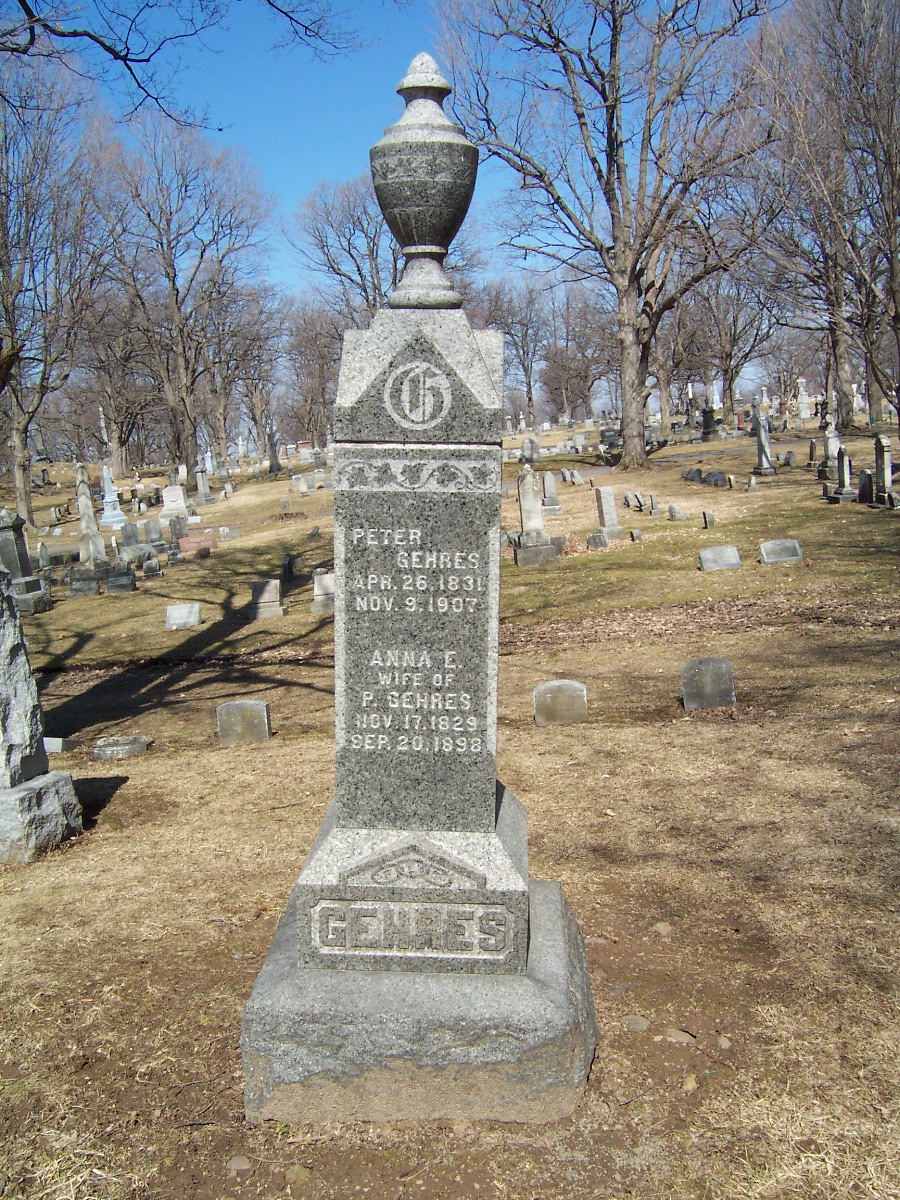
Friedrich Huettenberger also offers another example of German travel documents from an earlier era. Below are the 1834 travel documents of Jacob Gilcher who settled in Ohio, shared here with permission granted by descendant Paul Rausch. Jacob, born in 1805, and his wife, Phoebe Dick, emigrated from Oberweiler in the same area of today’s Germany as where Peter Gehres and Anna Elisabetha Falk once lived (and my own Gilcher and Kreischer immigrants as well; these Gilchers are distant cousins of mine, part of the Essweiler Gilcher family tree researched so thoroughly by Friedrich Huettenberger).
The first page is a Bavarian passport filled out in Speyer, the seat of the government of the Bavarian “Rheinkreis,” at that time a distant and separate part of the larger Kingdom of Bavaria. Then, as the stamps on the back reveal, the passport was sent to Karlsruhe, to be approved by the French ambassador. Jacob Gilcher took the same route of emigration as did Peter Gehres 21 years later, via Forbach to Le Havre.
There were several ways an emigrant could travel to Le Havre: by ship, by postal transport services (horse-drawn coaches), by privately owned horse-drawn wagon, or by a rented wagon. In 1834 Jacob Gilcher took the land route via Saarbrucken, Forbach, Metz, Paris, and then to Le Havre. By 1851 early train lines would exist along at least parts of the route.
Jacob Gilcher traveling in 1834 had to get another passport on entering France, a French one. On leaving Le Havre, the name of his ship, the “Austerlitz,” was written on top of this passport.
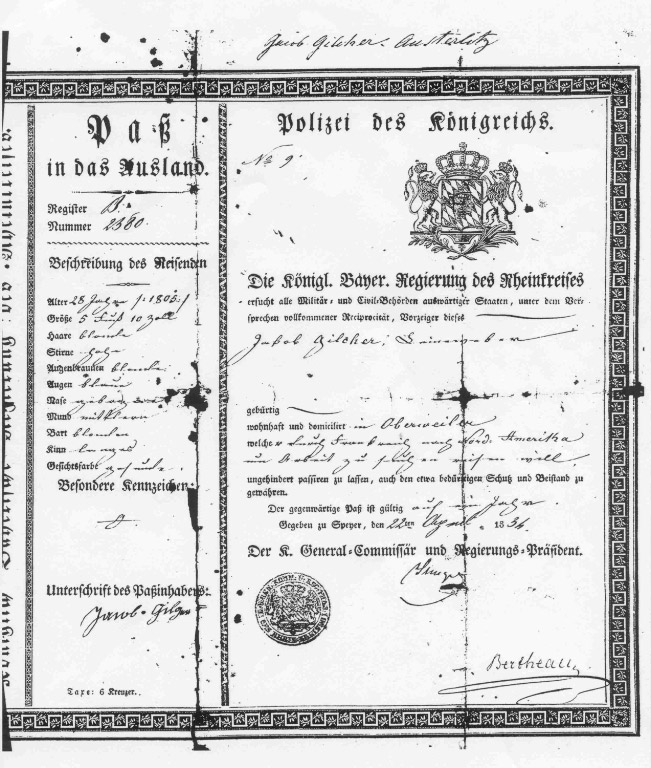
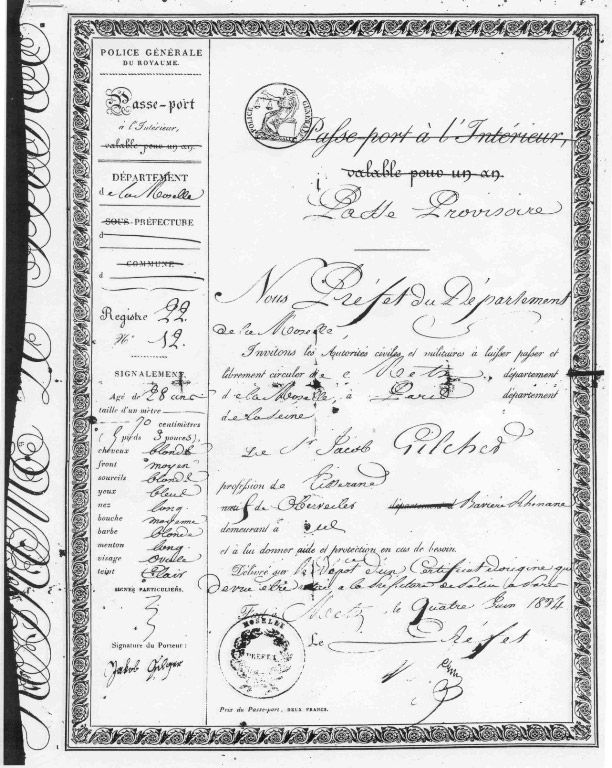
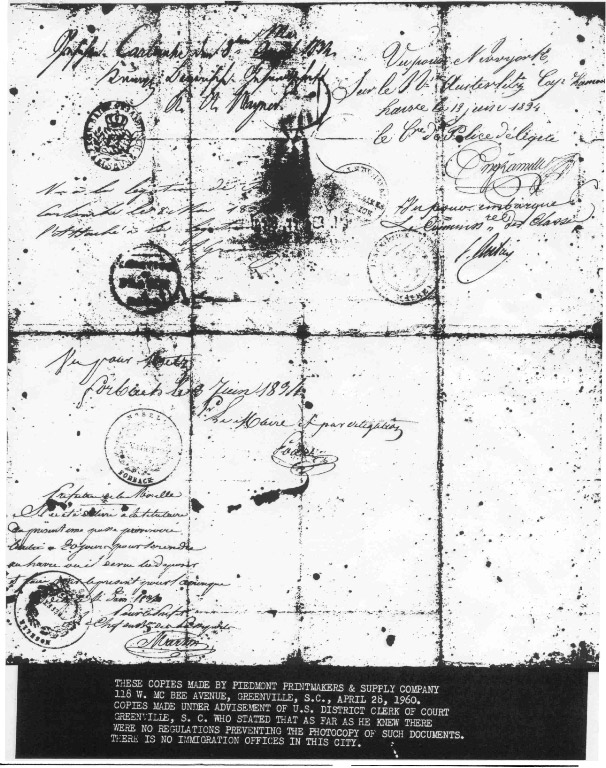
This couple settled in Shiloh, Ohio and today their descendants spell their surname as GILGER. They have a very nice, very old, portrait of their immigrant ancestors, Jacob and Phoebe:
